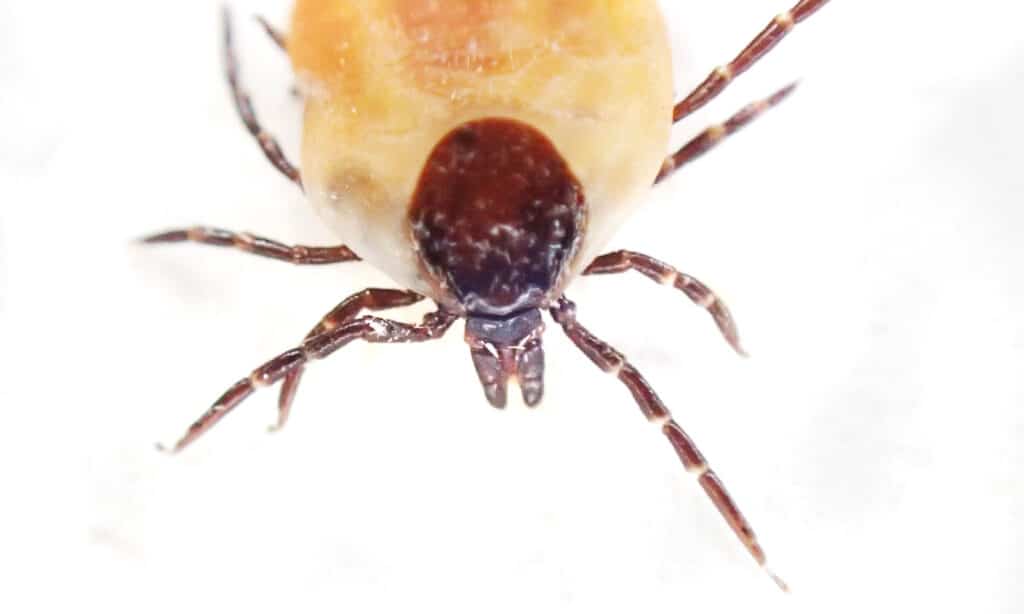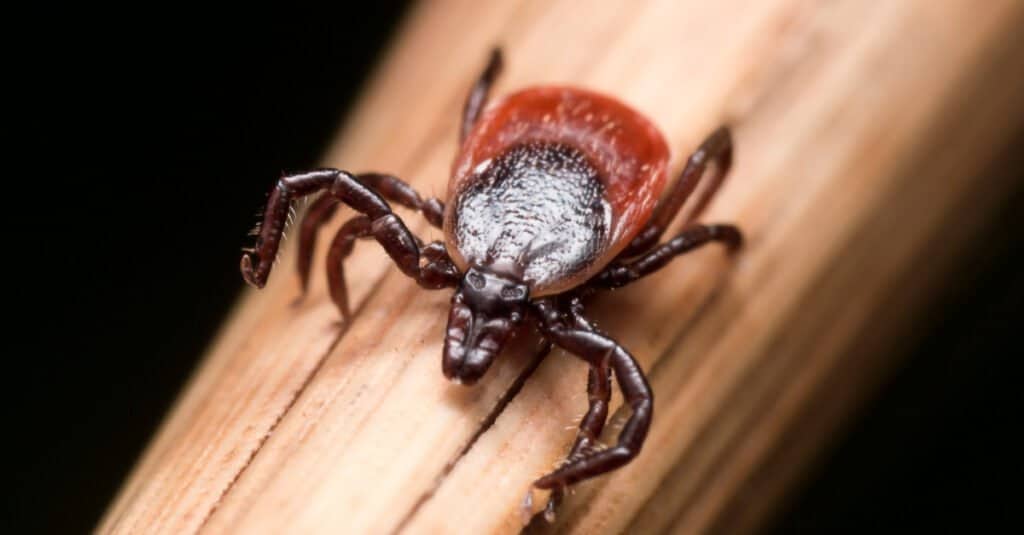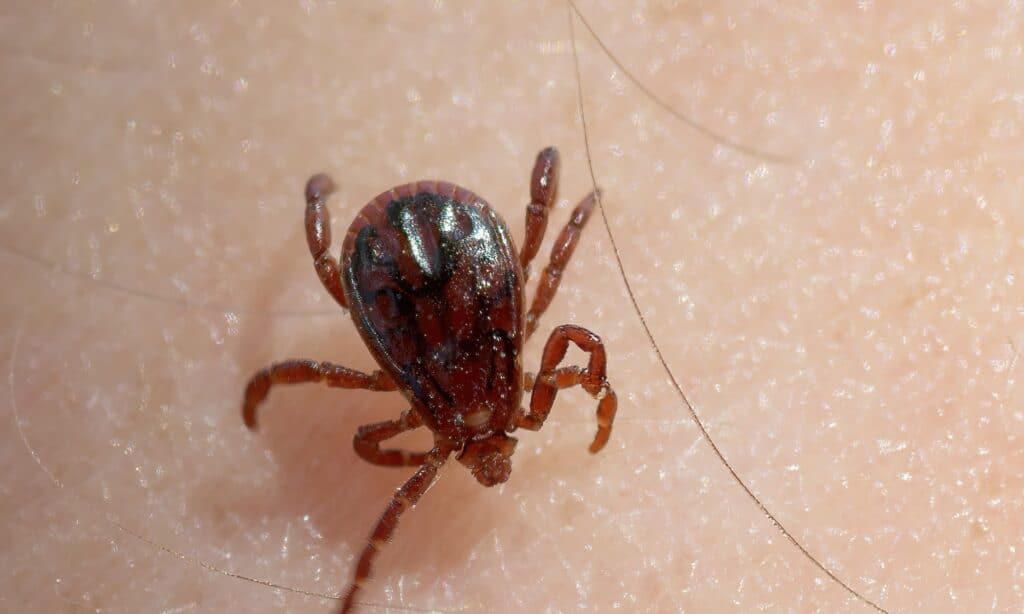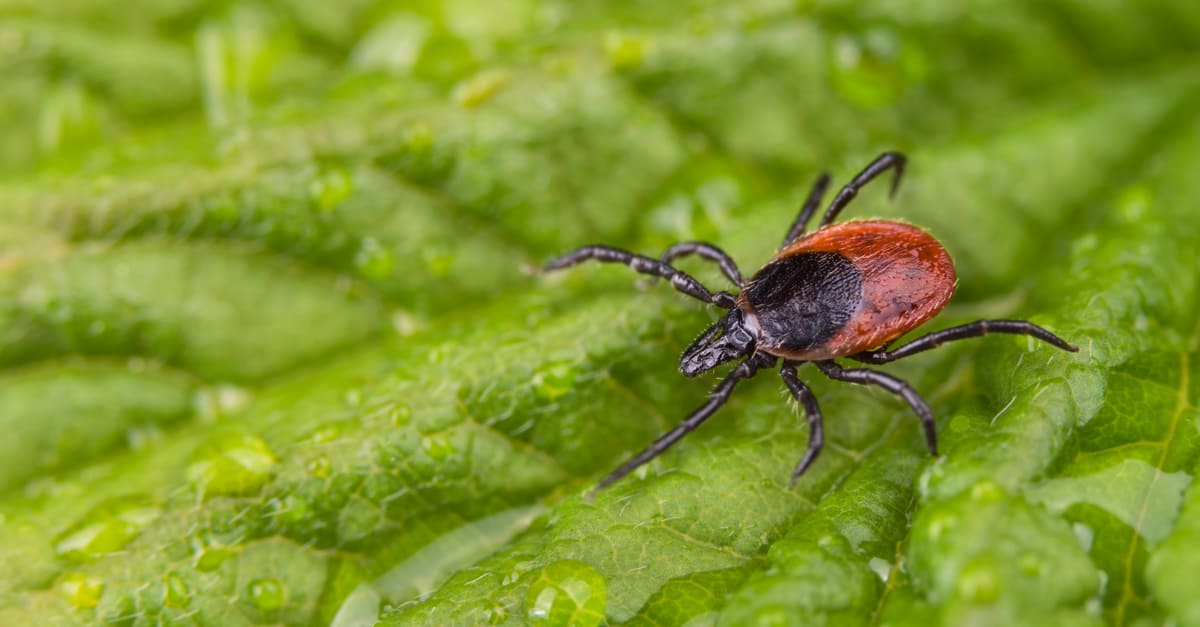Unfortunately for residents of Michigan, this mid-western state’s moderate climate makes it the perfect haven for one of our least favorite arachnids—the tick. Ticks in Michigan have it easy; they live in grasslands and forests alike and can even be found indoors. More than 20 species of tick live in Michigan, but only five of these are common enough to worry about.
So, if you’re planning on heading outside in Michigan any time soon, check out the five most common types of ticks in Michigan. We’ll learn how to tell one from another, what diseases each species carries, and which you need to worry about most. Then, we’ll take a look at the best ways to avoid tick bites in Michigan.
Let’s get started!
Lone Star Tick

Lone star ticks live all over North America.
©iStock.com/epantha
Ticks in Michigan live just about everywhere. Lone star ticks, in particular, prefer forests with plenty of leaf litter to hide in. They hatch on the ground and take small animals, like mice and squirrels, for their first blood meal. As they get bigger, they feed off of bigger creatures, including humans. Lone star ticks have a single white dot on their back (unless they’re male, in which case they have white mottling). Fortunately, they don’t spread Lyme disease.
American Dog Tick

The American dog tick occupies an entirely different habitat than the brown dog tick.
©iStock.com/nechaev-kon
One of the most prevalent ticks in Michigan, the American dog tick is named for both its native land and its favorite food. This tick lives primarily in fields and is also known as wood tick. It is the main vector of Rocky Mountain spotted fever in the United States, though it doesn’t carry Lyme disease. It prefers a host of the canine variety. American dog ticks also feed on raccoons, skunks, foxes, deer, and other warm-blooded creatures.
Woodchuck Tick

Woodchuck ticks feed mostly on small to medium-sized mammals.
©iStock.com/jonnysek
Small with narrow bodies, woodchuck ticks have red-brown coloring. They’re one of the most common ticks in Michigan, though they mostly stick to small or medium-sized mammals. As you may have guessed from their name, their favorite blood meals come from woodchucks (they’re also known as groundhog ticks). These ticks won’t say no to other animals and are often found on dogs, cats, weasels, porcupines, and even birds. They look extremely similar to the much more concerning deer tick, though, unlike the deer tick, woodchuck ticks don’t carry Lyme disease.
Deer Tick

One of the most common ticks in the world, the deer tick is also one of the most problematic.
©Steven Ellingson/Shutterstock.com
Commonly known as the black-legged tick, the deer tick is perhaps the most worrisome of all ticks in Michigan. But why are deer ticks so scary? Well, deer ticks carry Lyme disease, which they then transmit to humans when they feed on them. Deer ticks prefer attaching to white-tailed deer but frequently bite any humans that stray across their path. They have red-brown bodies and distinct, black legs. These ticks are most common in forests and in the boundary zones between woodlands and grasslands.
Brown Dog Tick

The bodies of brown dog ticks can expand up to six times their original size with a large blood meal.
©iStock.com/RobertAx
Of all the ticks in Michigan, the brown dog ticks are the only species to live indoors. These ticks love dogs—more specifically, they love the blood of dogs. They’re common in dog beds, crates, kennels, and in any home with resident dogs. Brown dog ticks spend most of their lives inside, where they feed on dogs, cats, and even humans. They transmit canine-specific diseases but can spread Rocky Mountain spotted fever in cases of bites to humans.
When is Tick Season in Michigan?
Winter is the best time of year for avoiding ticks in Michigan. Most ticks go into hibernation during the cold months, hatching and becoming active again once the snow melts. Adult ticks are most active through the summer and fall, while larval and nymph ticks are most active in the spring months.
Do Ticks in Michigan have Lyme Disease?

Lyme disease is a debilitating, misdiagnosed disease spread through tick bites.
©Kalcutta/Shutterstock.com
Of the over 20 species of ticks in Michigan, the only one you need to be worried about in regards to Lyme disease is the deer tick. These ticks are responsible for nearly all cases of Lyme disease in the United States. They can spread Lyme disease to humans, even as larvae and nymphs. In these cases, the young ticks are so small that bites often go unnoticed. Because of this, Lyme disease can go undiagnosed for months or even years, leading to chronic health problems in sufferers.
Where Do Ticks Live in Michigan?
Ticks in Michigan are most prevalent in wooded areas, as well as fields with tall grass or shrubs. Many species of tick attach to hosts by ‘questing.’ While questing, ticks hang out on blades of grass, or the tips of shrubbery, with their two front arms outstretched. When something, like a human or dog, brushes by, the tick hitches a ride and finds a place to suck blood.
How to Avoid Ticks in Michigan

There are many ways to protect yourself against ticks.
©Afanasiev Andrii/Shutterstock.com
Avoiding ticks in Michigan starts with wearing long-sleeved shirts and long pants. Light colors work best, as dark tick bodies stand out against the fabric. Additionally, avoid digging around in leaf litter or walking through grass or shrubs that rub against your skin or clothes. After any hike, check yourself for ticks.
Thank you for reading! Have some feedback for us? Contact the AZ Animals editorial team.








